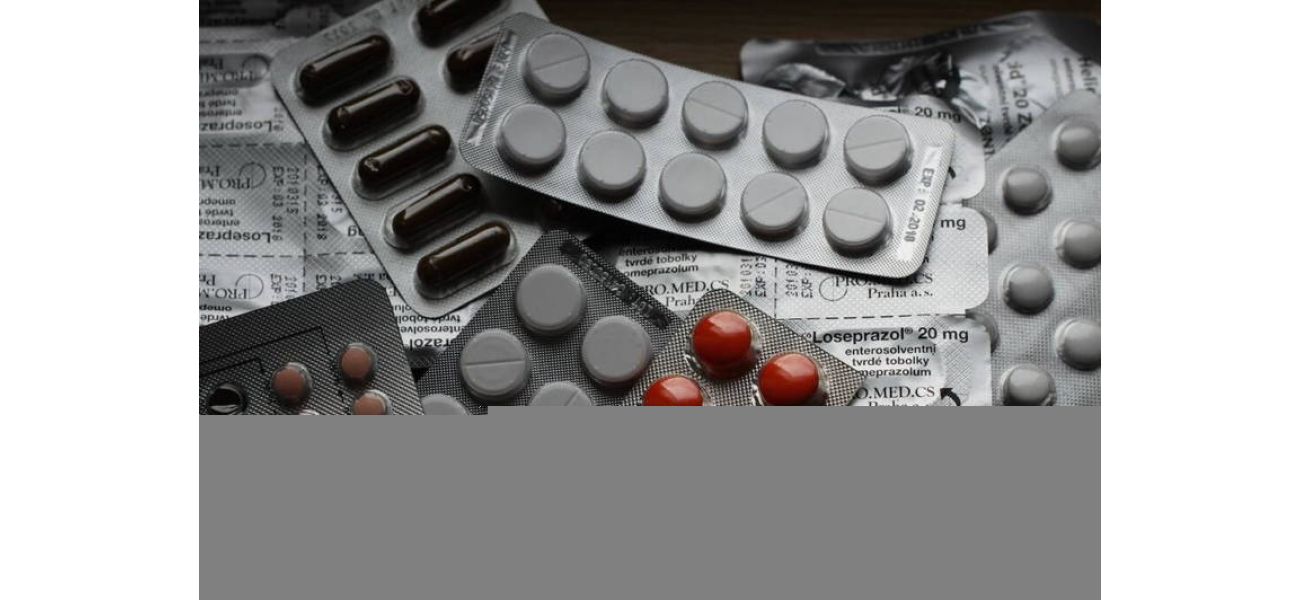Will Medicare Part D help alleviate the increasing costs of prescription drugs?
When competition is low, prices will rise due to the law of supply and demand.
October 13th 2025.

The supply and demand aspect of the healthcare industry have led to soaring prices, particularly in the realm of prescription drugs. This has created a difficult situation for patients, especially those on Medicare, who are often faced with high out-of-pocket costs for essential medications. Unable to afford these prices, many patients are forced to forego necessary care, which can have serious consequences for their health.
In 2022, the Inflation Reduction Act was introduced as a partial solution to this issue. It aimed to limit out-of-pocket spending for prescription drugs under Medicare Part D to $2,000. While this has provided immediate relief for millions of beneficiaries, there are still vulnerabilities that exist, such as rising prices for drugs not covered by Part D and other factors.
To conduct a thorough analysis of Medicare Part D, CheapInsurance.com gathered data from reputable sources such as the National Library of Medicine, CMS Newsroom, and the Pan Foundation. The results showed that the $2,000 out-of-pocket cap has had a significant impact on beneficiaries. Approximately 11 million people are expected to hit this cap in 2025, resulting in a collective projected savings of $600 per person, amounting to nearly $7 billion in total.
However, the $2,000 cap is not a cure-all for the issue of high drug costs. It only applies to outpatient drugs covered by Part D, which excludes many commonly used medicines. Additionally, for those on a limited budget, $2,000 is still a significant amount of money, and reaching this cap does not necessarily alleviate financial strain.
One of the benefits of the new cap is its impact on individuals with high-cost conditions that require specialty or biologic therapies. These treatments can be extremely expensive, with some cancer treatments averaging between $1,000 and $20,000 per year. The $2,000 limit helps to alleviate some of the financial burden for these patients.
Furthermore, the $2,000 cap is indexed and is projected to increase over time. This is meant to protect against inflation and rising drug prices, but it may not keep pace with economic uncertainty and increasing prices. This is a concern for patients with persistent high drug needs, as they may face increased pressure if drug prices continue to rise.
There are several factors driving the increase in drug prices, including market concentration and delays in generic access. When a drug has no generic or biosimilar competition, the manufacturer has pricing power and is not subject to the laws of supply and demand. This has led to significant concentration in the market, with 10 drugs accounting for nearly a quarter of gross Part D spending. This concentration creates pricing issues and has prompted the Medicare Payment Advisory Commission to recommend a redesign of Part D.
In addition to market concentration, there are also structural issues with the design of Part D that contribute to high drug prices. These include cost-sharing through coinsurance rather than fixed copays, basing cost-sharing on gross prices, and the potential for plan retaliation. These structural issues can lead to patients facing higher out-of-pocket costs.
Overall, the introduction of the $2,000 out-of-pocket cap under Medicare Part D has provided some relief for beneficiaries. However, there are still vulnerabilities and concerns surrounding rising drug prices and the potential for plan retaliation. As the healthcare industry continues to evolve, it is crucial to address these issues and find solutions that benefit patients and their access to necessary medications.
Supply and demand are natural forces that dictate the prices of goods and services in any market. When there is an abundance of competition, prices tend to stay low. However, when competition is scarce, prices have a tendency to skyrocket. This law of supply and demand is especially apparent in the healthcare industry, where limited competition has led to exorbitant prices for specialty prescription drugs. As a result, many patients are forced to make difficult decisions, such as forgoing necessary medication, in order to avoid high out-of-pocket costs. This can have serious consequences for their health.
Medicare beneficiaries, in particular, have been greatly affected by the soaring prices of prescription drugs. The high costs of specialty drugs and out-of-pocket expenses have become a major issue in U.S. health policy. In 2022, the Inflation Reduction Act was introduced as a partial solution to this problem. Starting in 2025 with the implementation of Medicare Part D, the act placed a cap of $2,000 on out-of-pocket spending for covered prescription drugs.
While this cap has provided immediate relief to millions of Medicare beneficiaries, there are still many vulnerable patients who face rising costs for drugs not covered by Part D. To gain a better understanding of the impact of Medicare Part D, CheapInsurance.com conducted a comprehensive analysis using data from reputable sources such as the National Library of Medicine and the CMS Newsroom.
The $2,000 out-of-pocket cap has had a significant impact on Medicare beneficiaries. According to the U.S. Department of Health and Human Services, an estimated 11 million individuals enrolled in Part D have already benefited from this cap. On average, these enrollees are expected to save $600 each, with even greater savings for those who do not receive financial assistance. This cap has three main areas of focus: the elimination of unlimited exposure in the "catastrophic" phase, a large beneficiary share, and annual indexing to protect against inflation and rising drug prices.
However, it is important to note that the $2,000 cap only applies to outpatient drugs covered by Part D. This means that many common medicines, such as injectables and infused therapies, are not included. Additionally, while $2,000 may seem like a significant amount, it may still be a financial burden for some individuals, and reaching the cap does not necessarily alleviate their financial stress.
One of the biggest benefits of the new cap is for patients who require treatment for high-cost conditions that often require specialty or biologic therapies. These include diseases related to the autoimmune system, rare cancers, multiple sclerosis, and chronic inflammatory diseases. For example, the average cost of cancer treatment ranges from $1,000 to $20,000 per year, and the cap on related treatments can make a significant difference for patients.
Furthermore, the $2,000 limit is indexed, meaning it will likely increase over time. The Final Calendar Year 2026 Part D Redesign Program projects that the cap will be $2,100 in the future. While this indexing is meant to protect against inflation and rising drug prices, it is not guaranteed to keep pace with economic uncertainty and increasing prices.
There are several factors driving the high prices of drugs in the U.S. One major factor is the market concentration and delays in access to generic drugs. When a drug has no competition, the manufacturer has a lot of pricing power and is not subject to standard supply and demand laws. A study by the Kaiser Family Foundation found that 10 drugs accounted for 25% of the gross spending in Part D, and the top 100 accounted for an additional 61%. This concentration creates pricing issues, and the Medicare Payment Advisory Commission has recommended a redesign of Part D to address this issue.
There are also structural issues with the design of Part D that have been highlighted by the Pan Foundation. These include cost-sharing through coinsurance rather than fixed copays, calculating patient cost-sharing on a gross-price basis, and the potential for plan retaliation to offset the risk created by the $2,000 cap.
The high prices of drugs also have a direct impact on patients who require ultra-expensive treatments. These patients face significant financial burdens, and the current structure of Part D can accelerate their progression to the catastrophic phase, resulting in higher out-of-pocket costs.
In conclusion, the law of supply and demand has a significant impact on the prices of prescription drugs in the U.S. Limited competition has led to skyrocketing costs, making it difficult for patients to afford necessary medication. While the Inflation Reduction Act and the implementation of the $2,000 cap under Medicare Part D have provided some relief, there are still many challenges that need to be addressed to make healthcare more accessible and affordable for all.
In 2022, the Inflation Reduction Act was introduced as a partial solution to this issue. It aimed to limit out-of-pocket spending for prescription drugs under Medicare Part D to $2,000. While this has provided immediate relief for millions of beneficiaries, there are still vulnerabilities that exist, such as rising prices for drugs not covered by Part D and other factors.
To conduct a thorough analysis of Medicare Part D, CheapInsurance.com gathered data from reputable sources such as the National Library of Medicine, CMS Newsroom, and the Pan Foundation. The results showed that the $2,000 out-of-pocket cap has had a significant impact on beneficiaries. Approximately 11 million people are expected to hit this cap in 2025, resulting in a collective projected savings of $600 per person, amounting to nearly $7 billion in total.
However, the $2,000 cap is not a cure-all for the issue of high drug costs. It only applies to outpatient drugs covered by Part D, which excludes many commonly used medicines. Additionally, for those on a limited budget, $2,000 is still a significant amount of money, and reaching this cap does not necessarily alleviate financial strain.
One of the benefits of the new cap is its impact on individuals with high-cost conditions that require specialty or biologic therapies. These treatments can be extremely expensive, with some cancer treatments averaging between $1,000 and $20,000 per year. The $2,000 limit helps to alleviate some of the financial burden for these patients.
Furthermore, the $2,000 cap is indexed and is projected to increase over time. This is meant to protect against inflation and rising drug prices, but it may not keep pace with economic uncertainty and increasing prices. This is a concern for patients with persistent high drug needs, as they may face increased pressure if drug prices continue to rise.
There are several factors driving the increase in drug prices, including market concentration and delays in generic access. When a drug has no generic or biosimilar competition, the manufacturer has pricing power and is not subject to the laws of supply and demand. This has led to significant concentration in the market, with 10 drugs accounting for nearly a quarter of gross Part D spending. This concentration creates pricing issues and has prompted the Medicare Payment Advisory Commission to recommend a redesign of Part D.
In addition to market concentration, there are also structural issues with the design of Part D that contribute to high drug prices. These include cost-sharing through coinsurance rather than fixed copays, basing cost-sharing on gross prices, and the potential for plan retaliation. These structural issues can lead to patients facing higher out-of-pocket costs.
Overall, the introduction of the $2,000 out-of-pocket cap under Medicare Part D has provided some relief for beneficiaries. However, there are still vulnerabilities and concerns surrounding rising drug prices and the potential for plan retaliation. As the healthcare industry continues to evolve, it is crucial to address these issues and find solutions that benefit patients and their access to necessary medications.
Supply and demand are natural forces that dictate the prices of goods and services in any market. When there is an abundance of competition, prices tend to stay low. However, when competition is scarce, prices have a tendency to skyrocket. This law of supply and demand is especially apparent in the healthcare industry, where limited competition has led to exorbitant prices for specialty prescription drugs. As a result, many patients are forced to make difficult decisions, such as forgoing necessary medication, in order to avoid high out-of-pocket costs. This can have serious consequences for their health.
Medicare beneficiaries, in particular, have been greatly affected by the soaring prices of prescription drugs. The high costs of specialty drugs and out-of-pocket expenses have become a major issue in U.S. health policy. In 2022, the Inflation Reduction Act was introduced as a partial solution to this problem. Starting in 2025 with the implementation of Medicare Part D, the act placed a cap of $2,000 on out-of-pocket spending for covered prescription drugs.
While this cap has provided immediate relief to millions of Medicare beneficiaries, there are still many vulnerable patients who face rising costs for drugs not covered by Part D. To gain a better understanding of the impact of Medicare Part D, CheapInsurance.com conducted a comprehensive analysis using data from reputable sources such as the National Library of Medicine and the CMS Newsroom.
The $2,000 out-of-pocket cap has had a significant impact on Medicare beneficiaries. According to the U.S. Department of Health and Human Services, an estimated 11 million individuals enrolled in Part D have already benefited from this cap. On average, these enrollees are expected to save $600 each, with even greater savings for those who do not receive financial assistance. This cap has three main areas of focus: the elimination of unlimited exposure in the "catastrophic" phase, a large beneficiary share, and annual indexing to protect against inflation and rising drug prices.
However, it is important to note that the $2,000 cap only applies to outpatient drugs covered by Part D. This means that many common medicines, such as injectables and infused therapies, are not included. Additionally, while $2,000 may seem like a significant amount, it may still be a financial burden for some individuals, and reaching the cap does not necessarily alleviate their financial stress.
One of the biggest benefits of the new cap is for patients who require treatment for high-cost conditions that often require specialty or biologic therapies. These include diseases related to the autoimmune system, rare cancers, multiple sclerosis, and chronic inflammatory diseases. For example, the average cost of cancer treatment ranges from $1,000 to $20,000 per year, and the cap on related treatments can make a significant difference for patients.
Furthermore, the $2,000 limit is indexed, meaning it will likely increase over time. The Final Calendar Year 2026 Part D Redesign Program projects that the cap will be $2,100 in the future. While this indexing is meant to protect against inflation and rising drug prices, it is not guaranteed to keep pace with economic uncertainty and increasing prices.
There are several factors driving the high prices of drugs in the U.S. One major factor is the market concentration and delays in access to generic drugs. When a drug has no competition, the manufacturer has a lot of pricing power and is not subject to standard supply and demand laws. A study by the Kaiser Family Foundation found that 10 drugs accounted for 25% of the gross spending in Part D, and the top 100 accounted for an additional 61%. This concentration creates pricing issues, and the Medicare Payment Advisory Commission has recommended a redesign of Part D to address this issue.
There are also structural issues with the design of Part D that have been highlighted by the Pan Foundation. These include cost-sharing through coinsurance rather than fixed copays, calculating patient cost-sharing on a gross-price basis, and the potential for plan retaliation to offset the risk created by the $2,000 cap.
The high prices of drugs also have a direct impact on patients who require ultra-expensive treatments. These patients face significant financial burdens, and the current structure of Part D can accelerate their progression to the catastrophic phase, resulting in higher out-of-pocket costs.
In conclusion, the law of supply and demand has a significant impact on the prices of prescription drugs in the U.S. Limited competition has led to skyrocketing costs, making it difficult for patients to afford necessary medication. While the Inflation Reduction Act and the implementation of the $2,000 cap under Medicare Part D have provided some relief, there are still many challenges that need to be addressed to make healthcare more accessible and affordable for all.
[This article has been trending online recently and has been generated with AI. Your feed is customized.]
[Generative AI is experimental.]
0
0
Submit Comment





